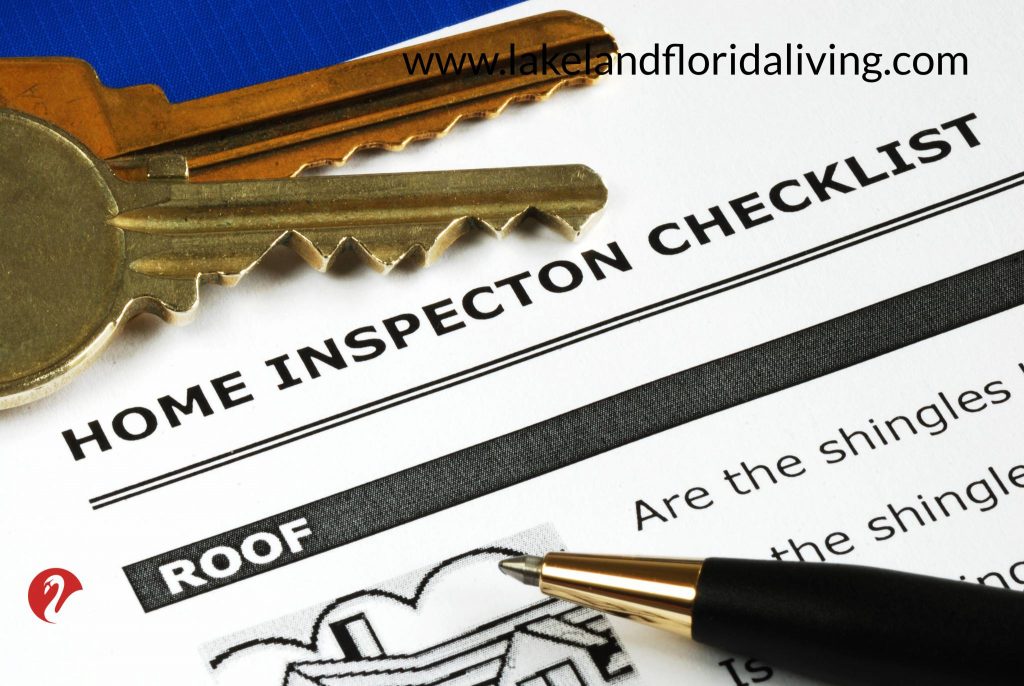If you are thinking about buying a home, you probably have a list of questions. Even if you’ve gone through the home buying process before, it’s not something you do every day, so you might want to do a little research to refresh your memory before getting started. And, if you’re a first-time homebuyer, then you definitely want to learn all you can about the process so you can avoid some of the most common mistakes first-time home buyers often make.
17 Easy to Follow Steps for Buying a Home Before You Begin
There are several things you should do in advance of buying a home. For example:
- Start saving for your down payment, learn about loan basics and the different types of home loans available to you.
- Assess your debt-to-income ratio then determine how much home you can afford.
- Check your credit reports on all three credit bureaus then correct all errors and inaccuracies.
- Research then select a real estate agent.
- Research then select a lender.
- Get preapproved for a loan (getting preapproved for a loan is better than just getting prequalified).
Now…let the home buying begin!
There are plenty of things to consider before deciding on which home and neighborhood are right for you. Therefore, it’s best to learn all you can about the process before committing to anything.
1. Assess and Rank Your Wants and Needs
Think about what you want and need in a home. What are your needs, your must haves. You will then take those needs and rank them in order of importance. Then take your wants and add them to the bottom of your needs list in order of importance. Next, you will give that list to your real estate agent. You will also use that list as a guide when looking at potential homes. Try to find a home with as many of those wants and needs as possible.
Keep in mind, in most cases, you won’t find all your wants and needs in every home, and probably not in any home, unless you are very lucky…it could happen, but usually doesn’t. So don’t get discouraged.
2. Decide on an Area when buying a home
The location of your home is very important. Take into consideration how close that home is to your job and potential jobs should you ever leave or lose the job you have now. How long is the commute time and what’s the traffic like during rush hours in that area, etc?
3. Start Your Home Search
Your real estate agent will give you a list of homes that meet the criteria you gave him/her. You can then browse that list on the internet sites of your choice to narrow down that list. Look at room sizes, kitchen and bathroom needs, furniture placement, views, outdoor living spaces, updates, pet and kid friendly features, upkeep, potential red flags, or possible future issues that will need to be fixed or replaced. Try to determine, at first glance, the approximate time frame for how long each of those items, such as the roof, will last. If the home doesn’t meet your basic needs, or if there are too many red flags and/or future repairs and replacements needed, delete it from your search and move on.
4. Tour Potential Homes
Contact your real estate agent and set an appointment to view your top home selections. Take your time looking at every home. Don’t be shy about opening cabinets and closets. You need to make sure every square inch meets your needs. Does the kitchen have enough cabinet and counter space? Are there enough shelves in those cabinets, closets, pantries, and linen closets? Are the closets big enough? Does the home have enough storage? What about the views? Does the home appear to have been well cared for?
5. Vetting a Neighborhood
 Now that you’ve found a few houses to consider, it’s time to thoroughly research those neighborhoods to determine if they are satisfactory and truly do meet the needs of your family.
Now that you’ve found a few houses to consider, it’s time to thoroughly research those neighborhoods to determine if they are satisfactory and truly do meet the needs of your family.
Here are some things to consider.
- Crime stats for the area.
- Check the area sex offender registry.
- Check local school performance stats.
- Check area data.
- Is it easy to get into and out of the neighborhood, or is it traffic locked at certain times? Are there any dangerous or hidden curves or blind spots?
- Assess local amenities such as grocery stores, hospitals, gas, banks, daycare centers, churches, restaurants, nightlife, parks, walkability (if important to you), etc. Does the neighborhood provide access to the amenities you regularly use? If not, consider a more suitable neighborhood or factor in the inconvenience of not having your frequently used amenities nearby and whether or not you are willing to accept that fact.
6. Select a Home and Submit a Contract
Once you’ve chosen a home, now it’s time to make an offer. You and your real estate agent will write a contract and submit an offer on the house including any contingencies. Now you wait for the seller to either accept, reject, or make a counteroffer. If the seller rejects the offer, your real estate agent will work with you on finding another house. If the seller makes a counteroffer, you have the option of accepting or rejecting that offer. Alternatively, once the seller counters back, the buyer has the option to counter back too. If the seller accepts your offer, great! However, once an offer is accepted, that is where the nitty-gritty begins. So buckle up, relax, and get ready for the ride.
7. Put Down Earnest Money
Upon signing a contract for your new home, you will be required to put down an earnest deposit as proof that you are serious about buying that home. The earnest money will be held in an escrow account and applied towards your closing costs or returned to you at closing. However, you only have a specified number of days to cancel that contract without losing your earnest money. For example, you could cancel the contract and get your money back if your home inspection uncovers something you aren’t willing to accept, but only if the cancellation is within the timeframe designated in the contract.
8. Preliminary Vetting of the Home
Before you get too far into the home buying process, you should [clickToTweet tweet=”Perform your own due diligence of that home before your cancellation period expires.” quote=”Perform your own due diligence of that home before your cancellation period expires.”] For example, you should check into the following before moving forward on the home:
- How much will the home owner’s insurance cost?
- How much will the annual property taxes be?
- Does the home (and your situation) qualify for a homestead exemption? If so, how much is it?
- Check the FEMA Flood Zone Map to see if the house is in a flood zone.
- How much will the flood insurance cost? Flooding is not covered under a standard homeowner’s insurance policy.
- Are all the utilities you need present and what is the range of each monthly bill based on last year’s usage? Are copies of those bills available for review?
- Check Plotscan.com to determine if there are any hazardous conditions in the surrounding area.
- Check with the city planning committee to learn about any future use of the surrounding area. You don’t want to buy a beautiful home that backs up to a green space only to find out a few years later that that green space has been turned into a new highway or big box store.
- Stand outside and listen to the noise levels. Do you hear planes, trains, excessive traffic noises or barking dogs? Does it have sound absorbing panels to prevent the noise?
- Is the home’s subdivision governed by an HOA? If so, make sure you thoroughly read and understand the rules before committing; otherwise, you could potentially lose your house.
- Are there any Community Development District (CDD), also known as Planned Unit Development (PUD) fees on top of the annual property taxes? If so, what are they?
- Talk with the neighbors to find out if they like the community and any neighborhood issues or concerns they might have.
- Find out if the seller has maintenance, repair, warranty information, and replacement records available.
- Will the seller be providing you with a Home Warranty?
NOTE: If you are buying a new construction home, you should take into consideration that when doing so, generally, the value of that home will go up every year for a while. Therefore, you will need to make sure you can afford to pay the increased property taxes each year until they level off.
9. Do a Title Search and Get Title Insurance
The title search and title insurance will serve as a legal safeguard against anyone else claiming ownership of that property at a later date whether that be a long-lost relative, tax-collector, or contractor who was never paid.
10. Have the Home Inspected when buying a home
Having your new home inspected before you proceed any further is almost more important than anything else. The home inspection will tell you whether to move forward with this particular home or to cancel the contract.
11. Other Recommended Inspections

Consider having the home inspected for pests of all kinds, including termites. You should also consider having the home tested for Radon gasses as well. And, if the home is in a high-risk area, you should consider having the home inspected for those risks also to make sure it’s able to withstand such risks. Like the ones that are present in earthquake and hurricane-prone areas, etc.
12. Asking the Seller to Make Repairs
If the home inspection turns up significant repairs, major replacements, or other potential problems, you have the option of asking the seller to correct those issues or lower the price of the home to compensate for them. Or, you might also suggest that the seller pay for your closing costs. If the seller refuses, you will have to decide whether to accept the home as is or cancel the contract and find another house. Either way, you need to realize that no home is perfect and the inspector will find faults. So after you receive the home inspection report, talk with your real estate agent for advice and recommendations. Then you can make an educated decision about how to proceed, or not.
13. Have the Home Appraised
Your lender will arrange to have the home appraised to determine the home’s true fair market value. The home appraisal is also used to provide an approval for the amount of the loan. If the appraiser doesn’t value the home for what you’ve agreed to pay for it, either you will have to come up with more money down to make up the difference, or the seller will have to agree to lower the price of the home.
14. Schedule a Final Walk-Through
You will need to schedule a final walk-through (inspection) of the home usually about 24 hours before the closing to make sure everything is in the same condition as when you first agreed to buy it. Never skip this step, because sometimes, after the seller has removed all their belongings, you will discover damage the initial inspection didn’t uncover. If you find a serious issue, make sure you address it before you close.
15. Closing
Now it’s time to close on your new home. You will start by signing all the legal closing documents. You should bring a valid picture ID with you and make sure you have at least 30 minutes to an hour to get everything signed. You might also opt to have a real estate attorney review all the paperwork prior to the closing and before you actually sign them. Especially if you aren’t familiar with or don’t want to take the time to read everything before you sign it.
You will also need to bring a certified check with you or have the bank wire the funds directly to the escrow account for the down payment and other associated costs.
16. The Wait Begins
After you’ve signed all the closing documents, you will have to wait for the home to be funded. Once the home is funded, usually within a few hours, you will be given the keys and the home is yours.
17. One Final Step
Before you go to the closing, you might want to have a locksmith dublin on standby to change the locks on your new home, as well as the shed and any other exterior doors, once you get the keys, unless you are capable of doing it yourself. And, if there are any alarm systems, garage door openers, etc. you might want to have those codes changed as well.
CONGRATULATIONS YOU ARE NOW THE PROUD OWNER OF A NEW HOME!
Other Resources for Buying a Home
What to do About Unpermitted Work When Buying or Selling a Home – Bill Gassett
9 Mistakes Home Buyers Make in a Hot Seller’s Market – Kevin Vitali
Closing Costs When Buying a Home – John Cunningham
Why do Homes Come “Back on Market” – Michelle Gibson
Are You Buying a Money Pit? – Sharon Paxson
_____________________________________________________________________________________________
About the author: The above real estate article “17 Easy to Follow Steps for Buying a Home ” was written by Petra Norris of Lakeland Real Estate Group, Inc. With over 20 years of combined experience of selling or buying, we would love to share our knowledge and expertise. Petra can be reached via email at petra@petranorris.com or by phone at 863-712-4207
We service the following Central Florida areas: Lakeland, Auburndale, Mulberry, Winter Haven, Bartow, Plant City, Seffner, Valrico, Polk City, Lake Alfred, Lake Wales, Haines City, and Davenport FL.
